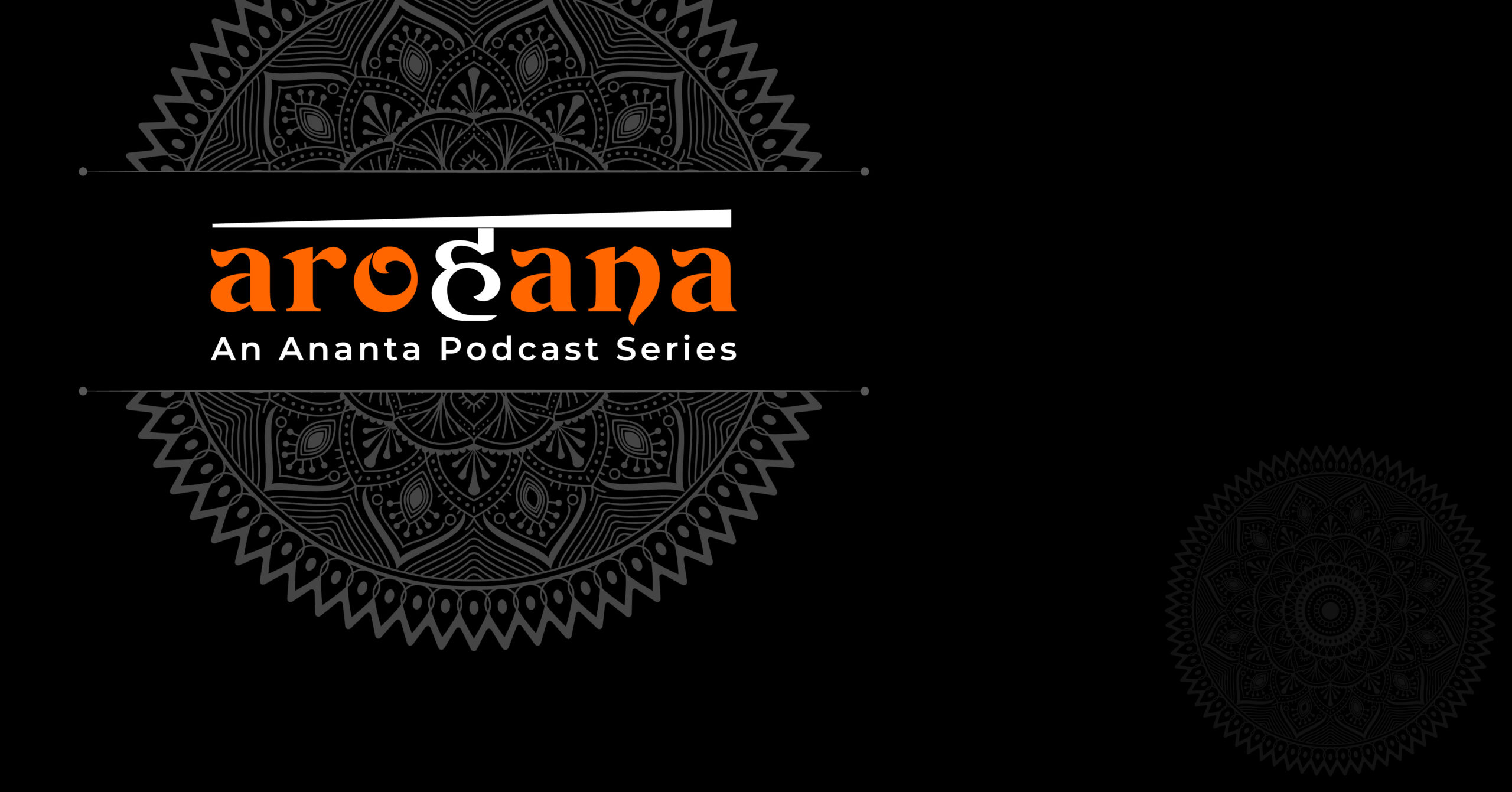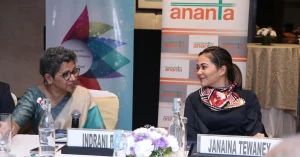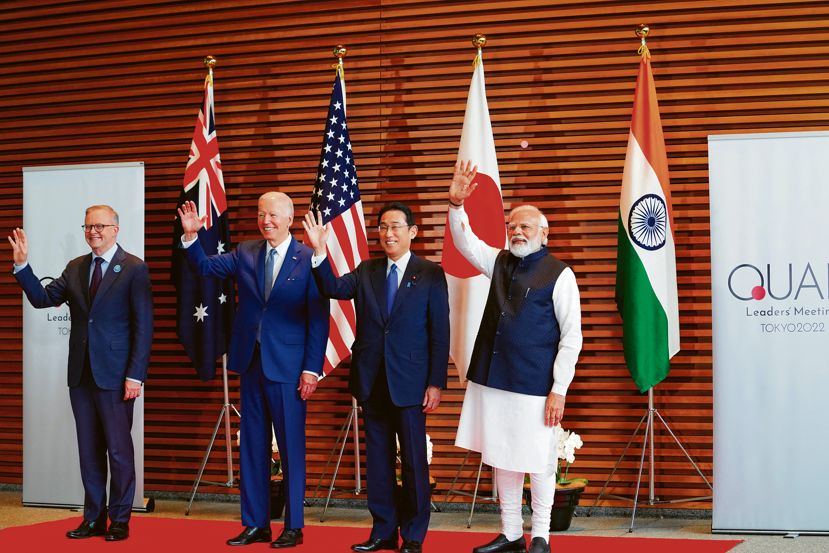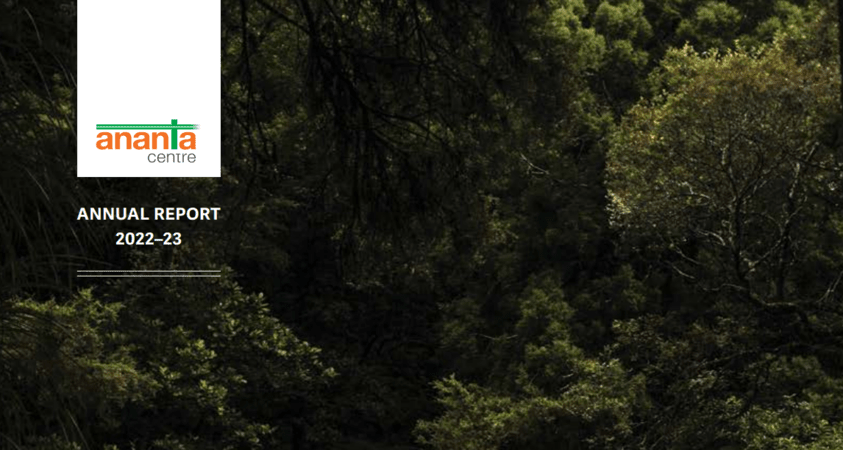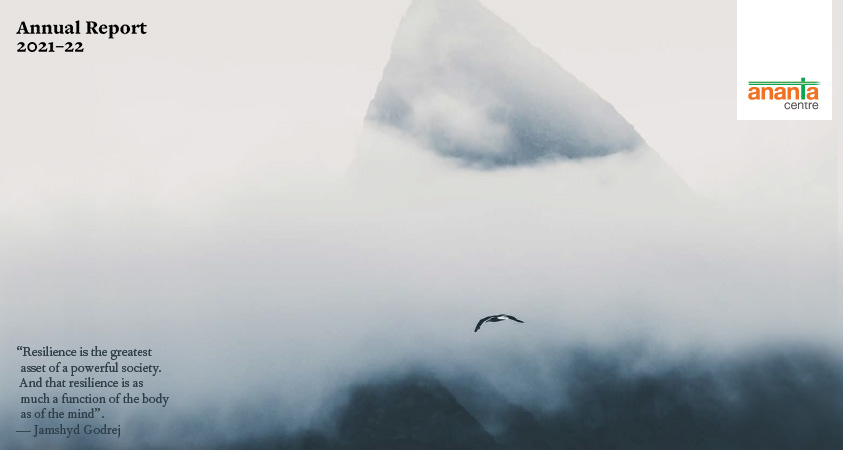H I G H L I G H T S
- Financial sector gets the Covid-19 jitters
- RBI’s financial stress report raises NPA alarms
- Challenges of moratorium, restructuring, capitalisation & funding
- To extend moratorium or not to extend it beyond August
- One-time loan restructuring and its implications for IBC
- Demand for more bank capital; Govt finances to be under stress
- Govt nudges banks to lend more, RBI Guv for non-banking funds
- India toughens its stance on China with more policy action likely
- After 18 years, India records trade surplus, but worries remain
- Unemployment rate down, led by rural India
Financial sector gets the Covid-19 jitters
India’s financial sector is going through one of its most difficult times. The patently imprudent financial adventurism of IL&FS, an infrastructure development and finance company that had run up a debt exposure of about Rs 99,000 crore, and the financial irregularities of YES Bank, a private-sector commercial bank, had already stressed the financial system that was slowly recovering from the burden of non-performing assets (NPA) with the help of the Insolvency and Bankruptcy Code (IBC). Now, after the Covid-19 pandemic has ravaged different segments of the economy, the spectre of an alarming resurgence of NPAs or sticky loans has begun haunting the Indian financial sector once again. Nobody summed up the challenge as succinctly as the current president of the Confederation of Indian Industry, Uday Kotak. In his annual message to the shareholders of Kotak Mahindra Bank, which he heads, Kotak said earlier this month: “The banking sector’s loan book is about Rs 100 lakh crore and the total capital of all banks in India is about Rs 11-12 lakh crore. So, if 4-5 per cent of loans turn bad due to Covid, the capital position of the banking sector will get impacted by 40 per cent. There will be some mark-to-market gains as bond yields have dropped. Still, the financial sector will need to be recapitalised.” Not surprisingly, provisioning by top private-sectors banks in the quarter ended June 2020 due to Covid-related problems rose to 27 per cent of their total operating profit. While most private-sector banks will still manage to weather the storm by raising the required capital, the financial conditions of public sector banks or PSU banks, which account for a little over 60 per cent of India’s banking sector, will be serious as the government, already burdened with a widening fiscal deficit, would be hard pressed to find more capital for them. The crisis staring the banking sector is as stark as that.
RBI’s financial stress report raises NPA alarms
If anyone still had some doubts about the impending challenges before India’s financial sector, those were quickly dispelled by the Financial Stability Report released by the Reserve Bank of India earlier this month. The central bank’s July 2020 Financial Stability Report quoted its macroeconomic stress tests for credit risk to project that the share of gross non-performing assets (GNPA) in the total assets of scheduled commercial banks may increase from 8.5 per cent in March 2020 to 12.5 per cent by March 2021 under a baseline scenario. If the macroeconomic situation worsens further, the GNPA share in total assets may rise to 14.7 per cent under conditions of a “very severe stress”. The scenario is likely to get worse for PSU banks, whose GNPA, under the baseline assumptions, may increase to 15.2 per cent by March 2021, compared to 11.3 per cent in March 2020. The more worrying projection is for private banks, for whom the share of GNPA in their total assets may shoot up from 4.2 per cent to 7.3 per cent in the same period. Not surprisingly, the capital adequacy ratio for all scheduled commercial banks may get worse. The capital to risk-weighted assets ratio or CRAR is feared to fall from 14.6 per cent in March 2020 to 13.3 per cent in March 2021 under the baseline assumptions, and further down to 11.8 per cent under assumptions of a more severe stress. In such a situation, there is no escape from raising more capital by the banks to take on the challenges in an economy ravaged by Covid-19. Recapitalisation will help banks create financial buffers and provide for more loans becoming sticky in the wake of the pandemic.
Challenges of moratorium, restructuring, capitalisation & funding
Four specific challenges are facing India’s banking sector at present. All of them will require the key stakeholders – the banks, the government, the RBI as the regulator – to put their heads together and formulate a credible and cogent strategy to be implemented in the coming days. These challenges are with regard to the need for an extension of the moratorium on loan repayment, restructuring of loans either through a specific package or by invoking the provisions of the Insolvency and Bankruptcy Code (IBC), provision of additional capital for PSU banks in particular and the methods that the financial sector should adopt for financing projects that need bank funds. The answers to all those four issues are not going to be easy.
To extend moratorium or not to extend it beyond August
Deciding the duration of the moratorium on loan repayment is going to be the first challenge. In the wake of Covid-19, the RBI had allowed a moratorium on loan repayment from March 2020 initially for three months. Later it was extended by another three months till the end of August 2020. There is now a renewed demand from industry that the period of moratorium should be extended beyond August. And the banking sector is nervous and trembling out of fear of the havoc the extension of the moratorium on loan repayment would do to their loan portfolios. Financial sector honchos, however, are strictly against any further extension to the moratorium. The numbers tell their own story. Almost half of the Rs 102 lakh crore of non-food credit (as on July 3, 2020) is under moratorium. For PSU banks, almost 68 per cent of their outstanding loans extended to 80 per cent of their total individual customers are under moratorium. For private sector banks, the loan amount under moratorium is substantially less at only 31 per cent of their outstanding loans. Moratorium on loan repayment is needed to help alleviate the borrowers’ short-term financial problems. But extending it for a longer duration runs the risks of a moral hazard – it encourages even those who can pay back their loans to use the moratorium and defer repayments, stressing the banking system including the non-banking finance companies in particular and the economy in general.
One-time loan restructuring and its implications for IBC
An alternative to extending the moratorium on loan repayment is to devise a one-time loan restructuring package for banks. But the big question that need to be addressed is the mechanism to be followed for restructuring the stressed loans. The IBC has been put in abeyance for about six months, with the legal option of extending it for another six months still remaining open. Should one-time restructuring follow the same IBC-mandated principles of transparent, market-based and time-bound discovery of pricing of the sticky loans? Or should there be some other mechanism of bilateral negotiations to settle at what price the cases of stressed assets can be resolved? The principles enunciated under IBC are not vulnerable to influencing or lobbying by political or vested interests. If those virtues are to be retained while undertaking one-time restructuring, the stakeholders like the banks, the regulator and the government must agree on the IBC-mandated norms or simply allow IBC to become operational once again. Already, a package for resolving sticky loans given to the micro, small and medium enterprises (MSME) is being prepared by the government. Hopefully, the norms of this package would rely on similar transparent and market-based principles with a time limit on resolution as had distinguished the operations under IBC. In short, the new initiatives on one-time restructuring or the MSME loan resolution should strengthen the IBC principles, and not weaken them.
Demand for more bank capital; Govt finances to be under stress
The Narendra Modi regime has been quite generous with its resources for recapitalisation of PSU banks. This is also because the crisis of growing NPAs blew up during its first five-year term that began in 2014. The second five-year term of the United Progressive Alliance, led by Manmohan Singh, saw infusion of about Rs 45,500 crore to recapitalise PSU banks between 2009-10 and 2013-14. In contrast, the Modi government’s first five years between 2014-15 and 2018-19 saw it recapitalising PSU banks to the tune of Rs 2.53 lakh crore. Another Rs 65,000 crore was pumped in by way PSU bank equity in 2019-20, raising the total bank recapitalisation amount in the last six years to a whopping Rs 3.18 lakh crore. All this was done during the pre-Covid era, when the need for capital infusion arose from the twin balance sheet problem of the Indian economy (growing indebtedness of Indian companies leading to a rise in bank NPAs). Now with Covid-19, the banking sector is in dire need for another round of recapitalisation. Ironically, the Union Budget for 2020-21 provided only a token allocation of just Rs 2 lakh for PSU bank recapitalisation. This is nowhere near the demand voiced by bankers in late July for a Rs 10-lakh crore recapitalisation of banks to help them face up to the Covid challenge. With the appetite for bank privatisation low in the current market situation, the need for PSU bank recapitalisation would be more and the government’s fiscal situation would come under further stress to tackle this challenge.
Govt nudges banks to lend more, RBI Guv for non-banking funds
There has, however, been no respite for the banking sector in general from overtures and even nudges from the government to lend more to projects in the country so that the Indian economy could revive quickly and at a faster pace. This is perhaps understandable in the context of year-on-year bank credit growth having slipped to just 6.1 per cent as on July 3, 2020, which was a shade better than the 5.9 per cent growth seen in March 2020, but less than half of the 13.2 per cent growth recorded in March 2019. At a meeting with bankers on July 29, Prime Minister Narendra Modi asked them to take care of the economy’s credit requirements as it emerges from the Covid pandemic. In an exhortation, that could create pressures on the banking system, the top bankers were told that while the government would provide all support to the banks, they in turn should not let the “ghosts of past NPAs” constrain them in providing fresh loans to bankable projects. The idea of creating a bad bank also came up at the meeting, but so far it has seemed there are not too many takers of what many believe to be a bad idea. RBI Governor Shaktikanta Das provided a different perspective by pointing out that India Inc should not just depend on the banks for meeting the borrowing requirements for their infrastructure projects. By laying emphasis on diversifying financing options and focusing on targeted lending for mega infrastructure projects, Das was only highlighting the banking sector’s weakening health and the need for prioritising the available lending resources. Clearly, the tasks ahead for the government and the RBI are going to be quite onerous.
India toughens its stance on China with more policy action likely
It all began with what appeared to be a minor tweak in the government’s policy on foreign direct investment (FDI). That was even before reports of India’s border skirmishes with China had become public. The FDI policy was modified to subject all investment proposals coming from countries sharing a land border with India to specific scrutiny and approvals. In other words, FDI from countries like Pakistan, Bangladesh, Bhutan, Nepal, Myanmar, Afghanistan and China no longer enjoyed the automatic approvals route. The policy tweak left few in doubt about who the real target of the policy change was. Most commentators found it to be targeted against China. A few weeks later, after India’s relations with China deteriorated with the border skirmishes, the Indian government banned as many as 59 Chinese mobile applications in the country. These included popular apps like TikTok, Shareit, Kwai, Helo, UC Browser and Baidu map. That was not all. Even as these Chinese app companies have made an appeal to New Delhi to remove the ban, arguing that their operations are not influenced by China, the Indian government has taken more steps in a similar direction. As many as 47 more Chinese apps were banned in the last week of July. Many of these apps were newer versions of the apps that had been banned earlier. It was clear that many of them were created to bypass the ban imposed on the earlier lot of 59 apps and the Indian government was swift in its response. A few more policy actions against China are reported to be under consideration. There are talks about imposing specific restrictions on imports from China, though such steps could be violative of the rules under the World Trade Organisation. Simultaneously, the government is considering the use of the Mandatory Testing and Certification of Telecom Equipment (MTCTE) regime to discourage private telecom companies in India from buying Chinese telecom equipment for their operations. This will certainly place curbs on Huawei’s business plans for India. New guidelines are also under consideration to regulate apps and social media platforms based on the country of origin. All in all, India’s approach to China on economic matters has got tougher. Whether that yields the desired results or not, is a different matter.
After 18 years, India records trade surplus, but worries remain
In the month of June 2020, India saw its first trade surplus in the last 18 years. June saw exports at $21.91 billion, while imports were estimated at $21.11 billion, giving the country a small trade surplus of $790 million. But a trade surplus is not good news in the context in which it was achieved in India. Exports fell by 12 per cent and imports too fell by a higher margin of 47 per cent. Thus, the surplus may provide some comfort to India’s external account, but it indicates serious problems because of lack of domestic demand and the absence of necessary triggers for growth. Also, the fall in the growth rate for both exports and imports is driven by continued moderation in crude oil prices. For the first quarter of 2020-21 though, merchandise goods trade continued to record a deficit of about $9 billion, though if you add the services trade surplus, India’s overall trade account (including both merchandise goods and services) showed a surplus of about $12 billion in the April-June quarter of 2020. This augurs well for India’s external account. In a year, when its fiscal deficit would exceed the budgeted figures by a huge margin, the absence of any pressure on the external account would be a relief.
Unemployment rate down, led by rural India
Going beyond the trade numbers, what are the broad signals on economic recovery? As on July 30, the unemployment rate, measured by the Centre for Monitoring Indian Economy (CMIE) on a 30-day moving average basis, was down to 7.54 per cent, lower than the pre-Covid monthly unemployment rate of 7.76 per cent in February 2020. Of course, there are concerns over the quality of jobs that are getting generated. It would appear that more informal jobs have been created in this period, compared to jobs in the organised sector. Even though the labour participation rate is inching back to its pre-Covid normal levels, the recovery in rural unemployment is more marked at 6.55 per cent (compared to 7.34 per cent in February 2020), while urban unemployment level at 9.7 per cent as on July 30 (on a 30-day moving average basis) is much higher than the February 2020 level of 8.65 per cent. In other words, the job recovery is taking place in rural India and in the informal sector, rather than in cities, towns and in the organised industry. The recovery signals in other sectors seem to suggest a mild slowing down in July. Railway freight earnings for the week ended July 26 were down 12 per cent, compared to a decline of 7.7 per cent in the previous week. Power generation in the week ended July 20 were lower by 2 per cent, compared to that in the same period of 2019. A week later, that gap has widened to over 7 per cent. But these are early signals and a clearer picture will emerge when the GDP growth figures for the April-June 2020 period are released on August 31, 2020.
(The views expressed are personal)




